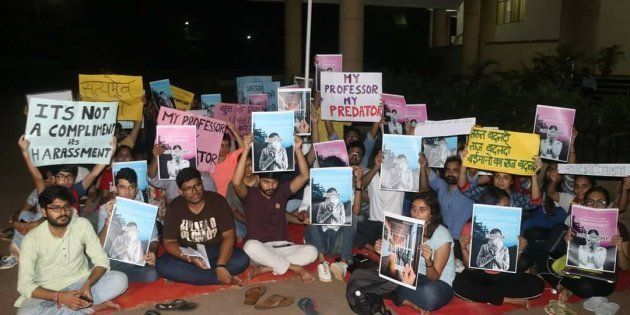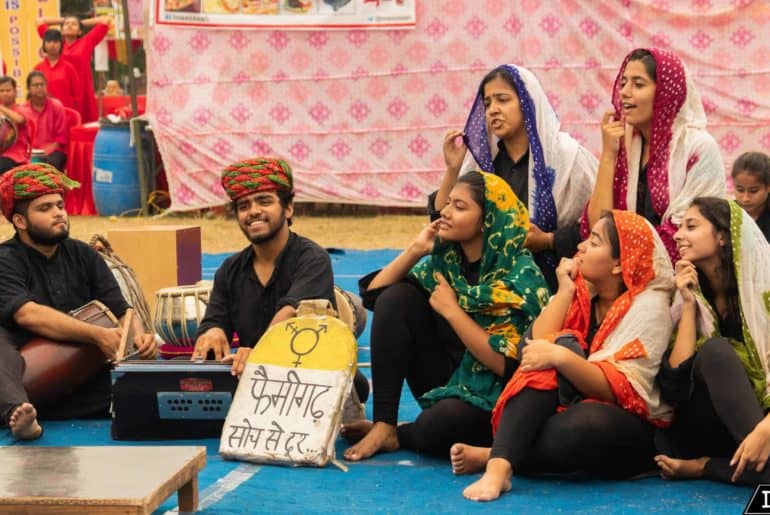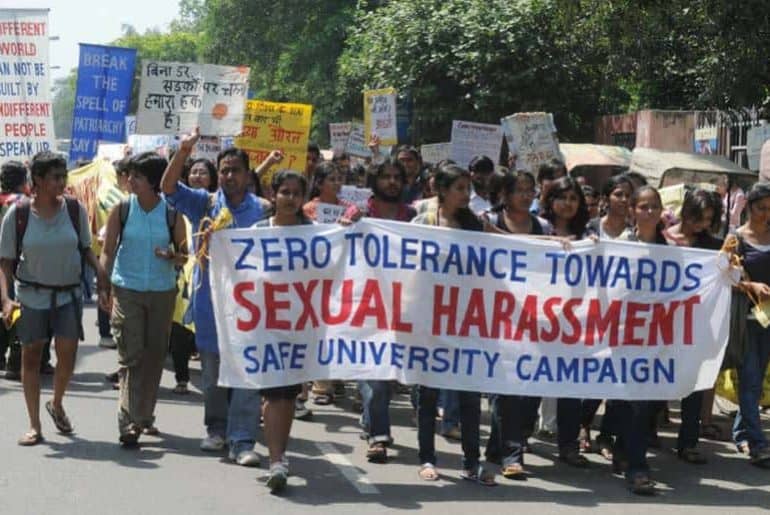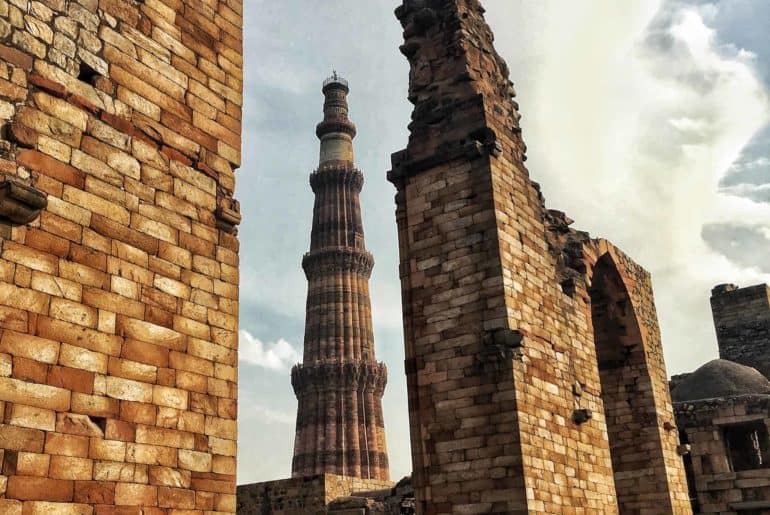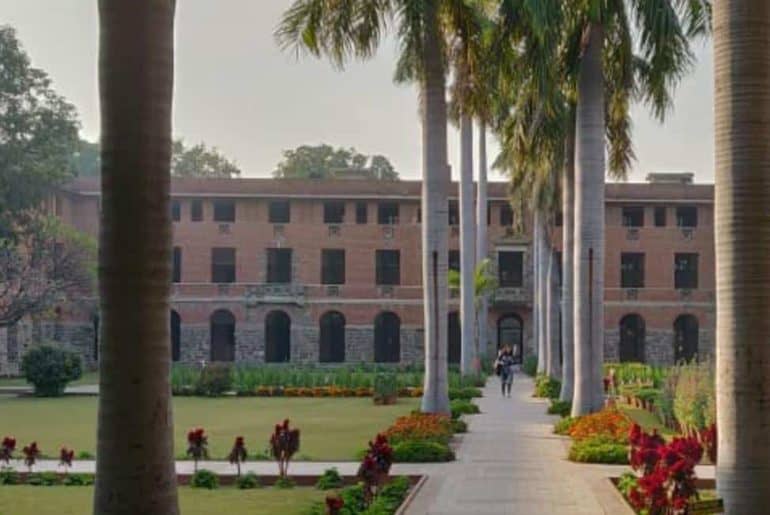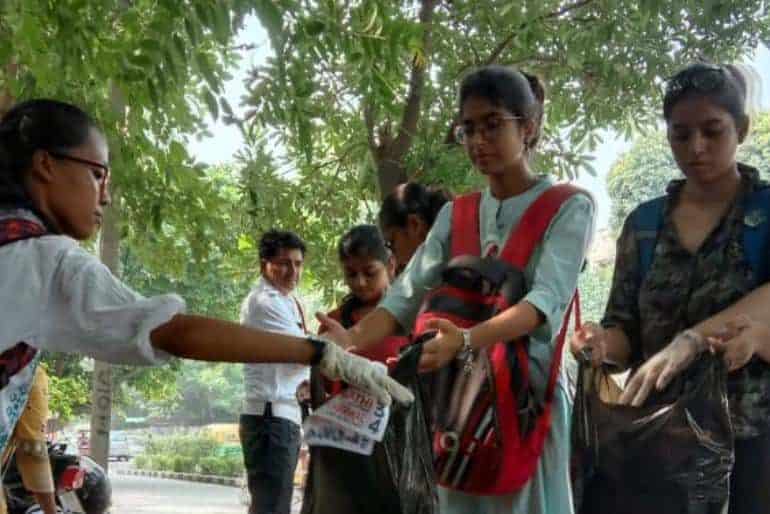TW: Sexual Harassment
As the sexual harassment case filed against the head of the Chemistry Department (HoD) moves to a third panel, despite the Internal Complaint Committee (ICC) finding the perpetrator guilty 19 months ago, it is time to acknowledge that the harassment culture in DU is more predatory than it seems.
A safety audit carried out by the National Students’ Union of India (NSUI) across colleges affiliated to the Delhi University (DU) stated that one in every four women studying in the University has faced sexual harassment. One in five cases of harassment were of touching or groping. Lewd gestures, staring and vulgar comments make up for the most rampant kind of harassment.
A total of 188 cases were recorded by the survey. The survey also highlighted cyber harassment. Carried across 24 colleges with 736 female respondents, it stated that one in five cases of harassment concerned trolling on social media or harassment through calls, text or WhatsApp messages. The report also stated that not even half of the respondents were aware of the Internal Complaints Committee (ICC) in their institutions.
Last year, when the #MeToo movement was a billowing surge, DU’s debating and MUN circuit ignited their own version of it, with female debaters coming up to narrate incidents of sexual assault or harassment. It was a shocking revelation to be made, the debating circuit has long been a platform with liberal ideas as its mainstay, and constant debates on feminism and equality. With allegations being made on a Facebook Group that served as an announcement board for tournaments called, ‘Debate Lokpal’, they called out senior members of DU’s debating circuit.
In April 2019, Moksh Nair, a third-year student from Shaheed Sukhdev College of Business Studies (SSCBS), was accused of harassing seven third-year girls at a farewell party, and the girls ended up dropping any legal charges against him.
A Political Science professor, from Delhi University’s Daulat Ram College, was arrested by the Maurice Nagar police on Monday, 5th February for allegedly sexually harassing a 17-year-old student. The student alleged that Professor, Abhay Kumar, had often tried to touch her inappropriately whenever he found her alone. The girl reportedly informed the police that he would follow her and ask her to meet him. He would even, allegedly, threaten to fail her in internal exams if she rejected his advances.
Principal Savita Roy had allegedly been informed about the Professor’s misdemeanour beforehand but had refused to take action. In fact, in the six days it took between the complaint being filed (31st January) and Kumar’s arrest (5th February), students point out that the Professor was not only allowed to enter the college premises but also allowed to take classes until he finally submitted his resignation.
In 2015, a St. Stephen’s Ph.D. student has accused a professor- Satish Kumar- of the college of sexual harassment. The victim in her complaint has alleged that the Professor harassed her while she was working with him in college. She also said that the college Principal, Valson Thampu, tried to stop her from going to the police and instead forced her to end the matter in the college. The reasoning behind this was stated as not causing any delay or problems in the completion of her Ph.D.
In 2013, The principal of Bhim Rao Ambedkar College was booked by Delhi Police for abetting the suicide of Pavitra Bhardwaj, a former employee who had accused him of sexual harassment. Instead of hearing her out, the college had sacked her two years prior. Bhardwaj, who succumbed to injuries on 7th October, alleged sexual and mental harassment by Arora and another staff member.
These cases are a few of the many that go unreported, unnoticed or are hushed down. It becomes essential to acknowledge the fact that there remain to be a few isolated cases, wherein the accuser fabricates the case in an attempt to shame the accused.
Yet, it becomes important to also acknowledge the fact that most of these cases are factual and are hushed down by authorities in an attempt to not tarnish the reputation of an institution, or even a community. With the Bharati College case reaching its 19th month and the perpetrator having been found guilty with no actions taken, it becomes vital to try and understand why it is that an institution that prides itself for being a safe, largely-liberal and accepting space, does so much to silence its survivors and protect its perpetrators.
Feature Image Credits: HuffPost India
Shreya Juyal

